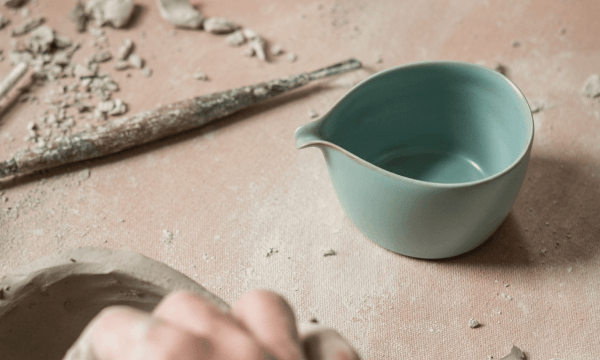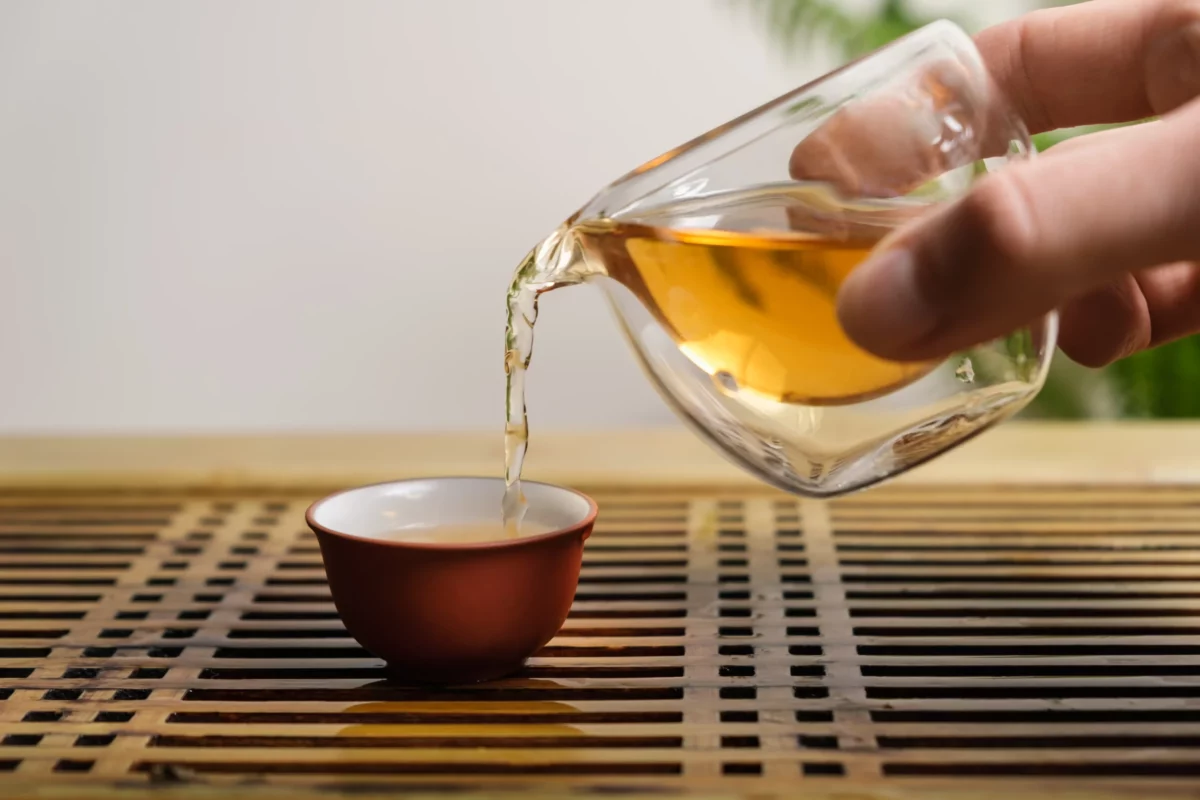tea and its surroundings, GONG FU CHA
Bai Hao Yin Zhen and Bai Mu Dan: the two most famous white teas in the world
They come from China, to be precise from Fujian Province, and they are the two best-known and most prized white teas, loved for their sweetness and the fresh and refined notes of their liquor: we are talking about Bai Hao Yin Zhen and Bai Mu Dan. In this article we help you learn more about them, telling you how they are made, what characteristics they have, and how to infuse them correctly to extract the maximum flavors in your cup.
What are white teas
Before delving into the details of Bai Hao Yin Zhen and Bai Mu Dan, let’s see what are the general characteristics of the type of tea to which they belong, namely white teas.
White tea is a naturally oxidized tea. This means that oxidation is very slight and natural: it is not blocked by heat, as is the case with green teas, which turn out to be unoxidized, nor encouraged by leaf processing, as is the case with red (or black) and oolong teas, which are 100 percent oxidized and semi-oxidized, respectively.
The leaves therefore retain their natural, irregular shape, as do the buds, of course. White teas are in fact the least processed of all tea types-the steps for their production are few and simple:
- Leaf/gem collection
- Outdoor/indoor wilting (or a mix) on bamboo mats
- Final drying
In fact, it is said that white tea is the “tea of slackers,” since-it is said-began by accident due to the extreme laziness of the Xiao brothers. According to Chinese legend, the two brothers owned a small tea garden but were too lazy to process the leaves. So they limited themselves to picking them, letting them wither in the sun and drying them. It was precisely this minimal processing that led to the production of sweet and delicate white tea.Discovered by a Fujian official, this new type of tea was introduced to the court and was immediately adored by the emperor, so much so that white tea became an imperial tribute under the Song dynasty. The cultivar initially used for white tea production in China was Xiao Bai, which yielded small buds and leaves(xiao = small).

Why is it called white tea? We find the white color both in the color of the liquor, sometimes so clear that it appears transparent, and in the soft down that covers the youngest buds and leaves, called pekoe o bai hao (bai in Chinese really means “white”). The pekoe is the defense that the camellia sinensis adopts to protect its most delicate parts from insect aggression and the elements: it is like an extra armor, making the leaves and buds very soft to the touch and giving them a velvet-like appearance, coloring them white and silver.
Bai Hao Yin Zhen: a white tea of only buds
Bai Hao Yin Zhen literally means “Silver Needles (with) White Hair” and is often referred to in the West by the English translation of“Silver Needle.” We have already seen what the words Bai Hao refer to, but how come “silver needles”? If you look at the appearance of this tea, it is quickly said: it is a tea composed only of gems, which look just like silver needles. Bai Hao Yin Zhen is a fine tea, the fruit of the first spring harvest: the first buds sprouted after the harsh winter period are rich in nutrients, accumulated during the plant’s months of hibernation, and will give fragrant and full aromas in the cup.
This tea isnative to Fujian, a province in the far east of China that faces the island of Taiwan: in particular, the city of Fuding is historically renowned for the production and processing of Bai Hao Yin Zhen, which compared to white tea from other areas, such as Yunnan, has more delicate and refined characters on an organoleptic level. The cultivar used for its production is Da Bai (lett: “great white”), discovered around the mid-1800s and originating precisely in the Fuding area. This cultivar, as its name suggests, is characterized by numerous and large buds. Legend also has it that in the past, the Bai Hao Yin Zhen gems destined to become tribute for the emperor were cut from the plant with golden scissors and dropped directly into golden containers before withering: so as not to ruin the gems by crushing them with your fingers and risking bruising them, no hand was to touch them!

On the nose, the wet buds of Bai Hao Yin Zhen release fresh, floral and fruity aromas with hints of honey. On the palate, fruit notes return, recalling apricot compote, joined by sweet hints and just a hint of vegetal. The liquor is light and almost transparent, a very pale gold sometimes enriched by pinkish hues. What is surprising about this tea is itsintense sweetness, so much so that one is under the illusion that it has had sugar or honey added! It is undoubtedly a very delicate tea, of which one may find it difficult to recognize all the nuances at first glance, especially if one is used to very strong and decisive tastes: but it remains an elegant tea full of charm, which lets one appreciate taste after taste until it conquers all palates.
Bai Hao Yin Zhen from Yunnan Province
In addition to Fujian, however, there are also other areas of China that produce respectable white teas: one such area is Yunnan province, in the deep southwest of the country. A different variety of camellia is used here: not the sinensis, but the taliensis, a local wild variety also widespread in adjacent areas such as Myanmar and northern Thailand. The Silver Needle from Yunnan is a very good tea, with large buds between green and silver and a fresh, full taste, rich in floral and fruity notes.
Bai Mu Dan: a white tea with a floral name
Translated from Chinese, Bai Mu Dan (or Pai Mu Tan, depending on the method used to transcribe the Chinese characters into the Latin alphabet) means“White Peony.” The motivations behind the name are not very clear: for some, the leaves of this tea are reminiscent of flower petals to the eye, for others it is the scent of the tea that recalls the floral notes of the peony, and for still others there is a legend that this tea was born from magical peonies that turned into camellias to save a woman’s life. It is certainly a very romantic and evocative name, perfectly suited to a gentle, floral tea such as this.
Again, this is an excellent white tea from Fuding and produced from Da Bai cultivars. Unlike Bai Hao Yin Zhen, Bai Mu Dan is composed of a bud and one or two leaves, which undergo natural and very slight oxidation, sometimes taking on a hue between green and brown. To the eye, Bai Mu Dan is in fact a mélange of colors ranging from the silver of the buds to the green and brownish of the more oxidized leaves, covered with a soft down. Basically, the harvest is always spring, but later than that of Bai Hao Yin Zhen.

Bai Mu Dan turns out to be somewhat more intense than Bai Hao Yin Zhen: although it too is a white tea, it has more pronounced aromas and flavors. The color of the liquor is golden and bright, with a very sweet aroma. Both on the nose and palate it usually has a vegetal note that may be reminiscent of fresh hay, along with distinctly floral hints and notes of honey and yellow-fleshed fruit.
How to infuse white teas
As with all types of tea, there are infusion times and temperatures to be respected for white tea. Depending on the specific white tea he we want to brew, moreover, different parameters can be chosen: let’s see how to properly infuse both Bai Hao Yin Zhen and Bai Mu Dan.
- Bai Hao Yin Zhen
If infusing in the Western style, we recommend a temperature of at least 80°C: as Bai Hao Yin Zhen is a tea composed solely of buds, the water must be able to penetrate past the protection formed by the bai hao in order to get as much as possible extracted and make the flavor rich and full in the cup. For the same reason, infusion times will be quite long: ranging from 4 to 5 minutes, also depending on the size of the buds (the larger the buds, the longer it will take). In gong fu cha, then using the Oriental method, you can keep the same temperature but increase the grams of tea by decreasing the amount of water. The first infusion will be 40 seconds, to gradually increase the time by 10 seconds with each subsequent infusion.
Western infusion: 3gr x 200ml / 4-5 minutes / 80°C
Infusion in gong fu cha: 5gr x 150ml / 40 seconds + 10 seconds / 80°C
- Bai Mu Dan
With Bai Mu Dan, which has lots of leaves in addition to buds, the temperature can stay around 75°C, so as to extract the sweet without overdoing the herbal component. For a Western-style infusion, 3-4 minutes will be sufficient. If infusing in gong fu cha, we recommend an initial infusion of 30 seconds, increasing the time by 10 seconds for subsequent infusions. The gram/water proportions are the same as those recommended for Bai Hao Yin Zhen.
Western infusion: 3gr x 200ml / 3-4 minutes / 75°C
Infusion in gong fu cha: 5gr x 150ml / 30 seconds + 10 seconds / 75°C
White tea and caffeine
A question that often arises is, “But does white tea, being so mild, have little caffeine?” The answer is: no, not necessarily. Consider that white tea is often made only from buds, such as Bai Hao Yin Zhen: the bud is the most nutrient-rich part of the plant and is the one that most has to defend itself from insects and pests. Its natural defense, in addition to the hair covering it, is precisely caffeine, which acts as a repellent against insects. A Bai Hao Yin Zhen will therefore be rich in caffeine, while a Bai Mu Dan, where the percentage of buds is significantly lower, will have less.

In 2005, the scientific journal Journal of Food Science published just such a study in which it analyzed the caffeine content in various teas, taking as sample 77 different commercial teas and comparing the various types (green, black, white, etc.). Contradicting the common belief that associates black tea with the highest caffeine content, the results of the research put white tea in first place, which was found to have the highest caffeine content of all teas!
The general rule always applies: the lower the water temperature and infusion time, the less caffeine is extracted. You can therefore opt for a lighter brew, limiting the amount of caffeine in your tea, or simply remember to consume it within the first half of the day.
Have we intrigued you? Try our white teas: you can find them all in the Tea Soul online store!


 Italiano
Italiano Français
Français Deutsch
Deutsch
